Boutheina Ben Yaghlane
LARODEC
The Advantage of Evidential Attributes in Social Networks
Sep 05, 2017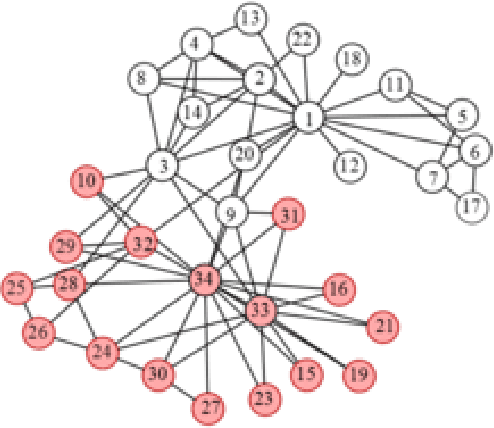
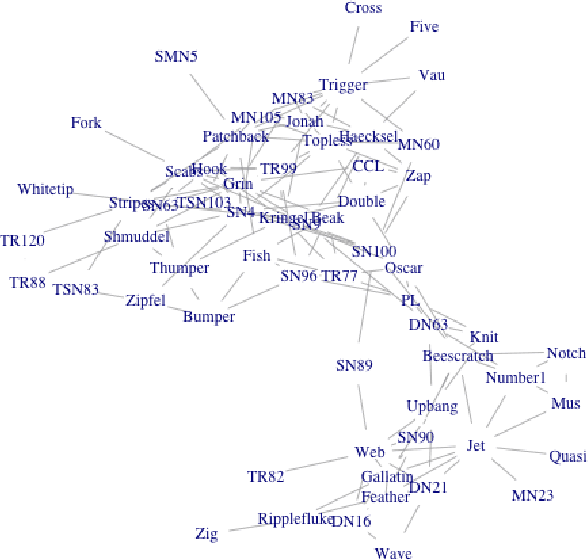

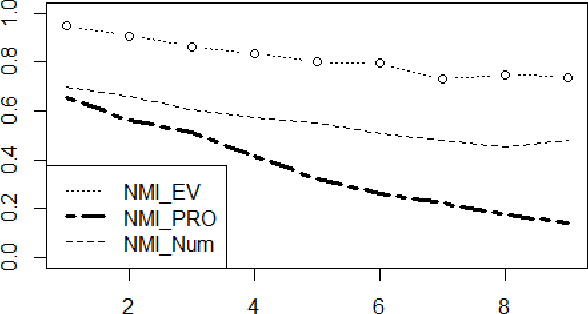
Abstract:Nowadays, there are many approaches designed for the task of detecting communities in social networks. Among them, some methods only consider the topological graph structure, while others take use of both the graph structure and the node attributes. In real-world networks, there are many uncertain and noisy attributes in the graph. In this paper, we will present how we detect communities in graphs with uncertain attributes in the first step. The numerical, probabilistic as well as evidential attributes are generated according to the graph structure. In the second step, some noise will be added to the attributes. We perform experiments on graphs with different types of attributes and compare the detection results in terms of the Normalized Mutual Information (NMI) values. The experimental results show that the clustering with evidential attributes gives better results comparing to those with probabilistic and numerical attributes. This illustrates the advantages of evidential attributes.
* 20th International Conference on Information Fusion, Jul 2017, Xi'an, China
Dynamic time warping distance for message propagation classification in Twitter
Jan 26, 2017


Abstract:Social messages classification is a research domain that has attracted the attention of many researchers in these last years. Indeed, the social message is different from ordinary text because it has some special characteristics like its shortness. Then the development of new approaches for the processing of the social message is now essential to make its classification more efficient. In this paper, we are mainly interested in the classification of social messages based on their spreading on online social networks (OSN). We proposed a new distance metric based on the Dynamic Time Warping distance and we use it with the probabilistic and the evidential k Nearest Neighbors (k-NN) classifiers to classify propagation networks (PrNets) of messages. The propagation network is a directed acyclic graph (DAG) that is used to record propagation traces of the message, the traversed links and their types. We tested the proposed metric with the chosen k-NN classifiers on real world propagation traces that were collected from Twitter social network and we got good classification accuracies.
Combining partially independent belief functions
Mar 17, 2015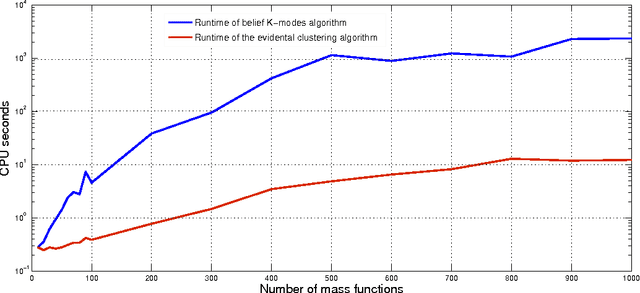
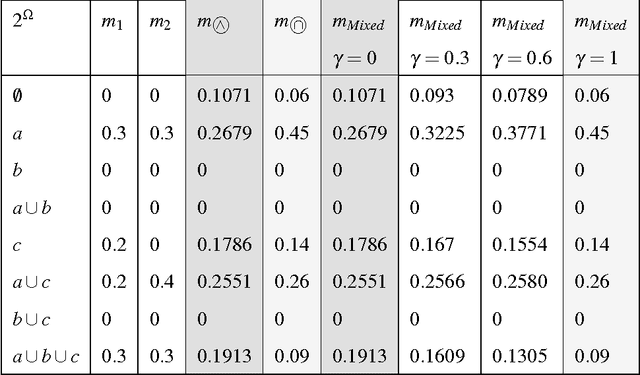
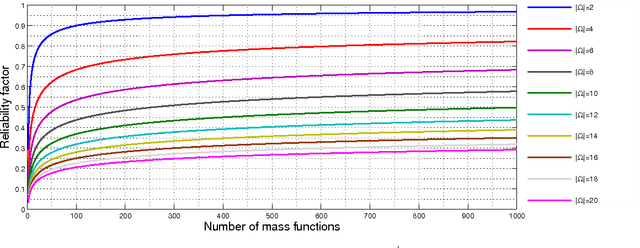

Abstract:The theory of belief functions manages uncertainty and also proposes a set of combination rules to aggregate opinions of several sources. Some combination rules mix evidential information where sources are independent; other rules are suited to combine evidential information held by dependent sources. In this paper we have two main contributions: First we suggest a method to quantify sources' degree of independence that may guide the choice of the more appropriate set of combination rules. Second, we propose a new combination rule that takes consideration of sources' degree of independence. The proposed method is illustrated on generated mass functions.
A Distance-Based Decision in the Credal Level
Jan 28, 2015



Abstract:Belief function theory provides a flexible way to combine information provided by different sources. This combination is usually followed by a decision making which can be handled by a range of decision rules. Some rules help to choose the most likely hypothesis. Others allow that a decision is made on a set of hypotheses. In [6], we proposed a decision rule based on a distance measure. First, in this paper, we aim to demonstrate that our proposed decision rule is a particular case of the rule proposed in [4]. Second, we give experiments showing that our rule is able to decide on a set of hypotheses. Some experiments are handled on a set of mass functions generated randomly, others on real databases.
Inclusion within Continuous Belief Functions
Jan 27, 2015



Abstract:Defining and modeling the relation of inclusion between continuous belief function may be considered as an important operation in order to study their behaviors. Within this paper we will propose and present two forms of inclusion: The strict and the partial one. In order to develop this relation, we will study the case of consonant belief function. To do so, we will simulate normal distributions allowing us to model and analyze these relations. Based on that, we will determine the parameters influencing and characterizing the two forms of inclusion.
Uncertainty in Ontology Matching: A Decision Rule-Based Approach
Jan 23, 2015


Abstract:Considering the high heterogeneity of the ontologies pub-lished on the web, ontology matching is a crucial issue whose aim is to establish links between an entity of a source ontology and one or several entities from a target ontology. Perfectible similarity measures, consid-ered as sources of information, are combined to establish these links. The theory of belief functions is a powerful mathematical tool for combining such uncertain information. In this paper, we introduce a decision pro-cess based on a distance measure to identify the best possible matching entities for a given source entity.
Belief Hidden Markov Model for speech recognition
Jan 22, 2015
Abstract:Speech Recognition searches to predict the spoken words automatically. These systems are known to be very expensive because of using several pre-recorded hours of speech. Hence, building a model that minimizes the cost of the recognizer will be very interesting. In this paper, we present a new approach for recognizing speech based on belief HMMs instead of proba-bilistic HMMs. Experiments shows that our belief recognizer is insensitive to the lack of the data and it can be trained using only one exemplary of each acoustic unit and it gives a good recognition rates. Consequently, using the belief HMM recognizer can greatly minimize the cost of these systems.
Classification of Message Spreading in a Heterogeneous Social Network
Jan 22, 2015



Abstract:Nowadays, social networks such as Twitter, Facebook and LinkedIn become increasingly popular. In fact, they introduced new habits, new ways of communication and they collect every day several information that have different sources. Most existing research works fo-cus on the analysis of homogeneous social networks, i.e. we have a single type of node and link in the network. However, in the real world, social networks offer several types of nodes and links. Hence, with a view to preserve as much information as possible, it is important to consider so-cial networks as heterogeneous and uncertain. The goal of our paper is to classify the social message based on its spreading in the network and the theory of belief functions. The proposed classifier interprets the spread of messages on the network, crossed paths and types of links. We tested our classifier on a real word network that we collected from Twitter, and our experiments show the performance of our belief classifier.
Trolls Identification within an Uncertain Framework
Jan 21, 2015


Abstract:The web plays an important role in people's social lives since the emergence of Web 2.0. It facilitates the interaction between users, gives them the possibility to freely interact, share and collaborate through social networks, online communities forums, blogs, wikis and other online collaborative media. However, an other side of the web is negatively taken such as posting inflammatory messages. Thus, when dealing with the online communities forums, the managers seek to always enhance the performance of such platforms. In fact, to keep the serenity and prohibit the disturbance of the normal atmosphere, managers always try to novice users against these malicious persons by posting such message (DO NOT FEED TROLLS). But, this kind of warning is not enough to reduce this phenomenon. In this context we propose a new approach for detecting malicious people also called 'Trolls' in order to allow community managers to take their ability to post online. To be more realistic, our proposal is defined within an uncertain framework. Based on the assumption consisting on the trolls' integration in the successful discussion threads, we try to detect the presence of such malicious users. Indeed, this method is based on a conflict measure of the belief function theory applied between the different messages of the thread. In order to show the feasibility and the result of our approach, we test it in different simulated data.
Belief Approach for Social Networks
Jan 20, 2015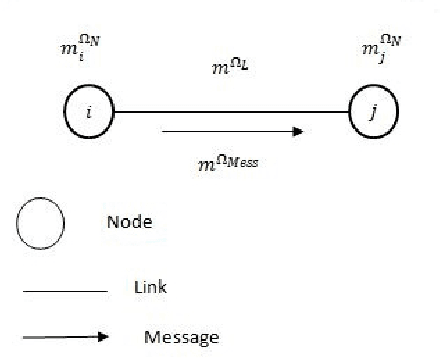


Abstract:Nowadays, social networks became essential in information exchange between individuals. Indeed, as users of these networks, we can send messages to other people according to the links connecting us. Moreover, given the large volume of exchanged messages, detecting the true nature of the received message becomes a challenge. For this purpose, it is interesting to consider this new tendency with reasoning under uncertainty by using the theory of belief functions. In this paper, we tried to model a social network as being a network of fusion of information and determine the true nature of the received message in a well-defined node by proposing a new model: the belief social network.
 Add to Chrome
Add to Chrome Add to Firefox
Add to Firefox Add to Edge
Add to Edge